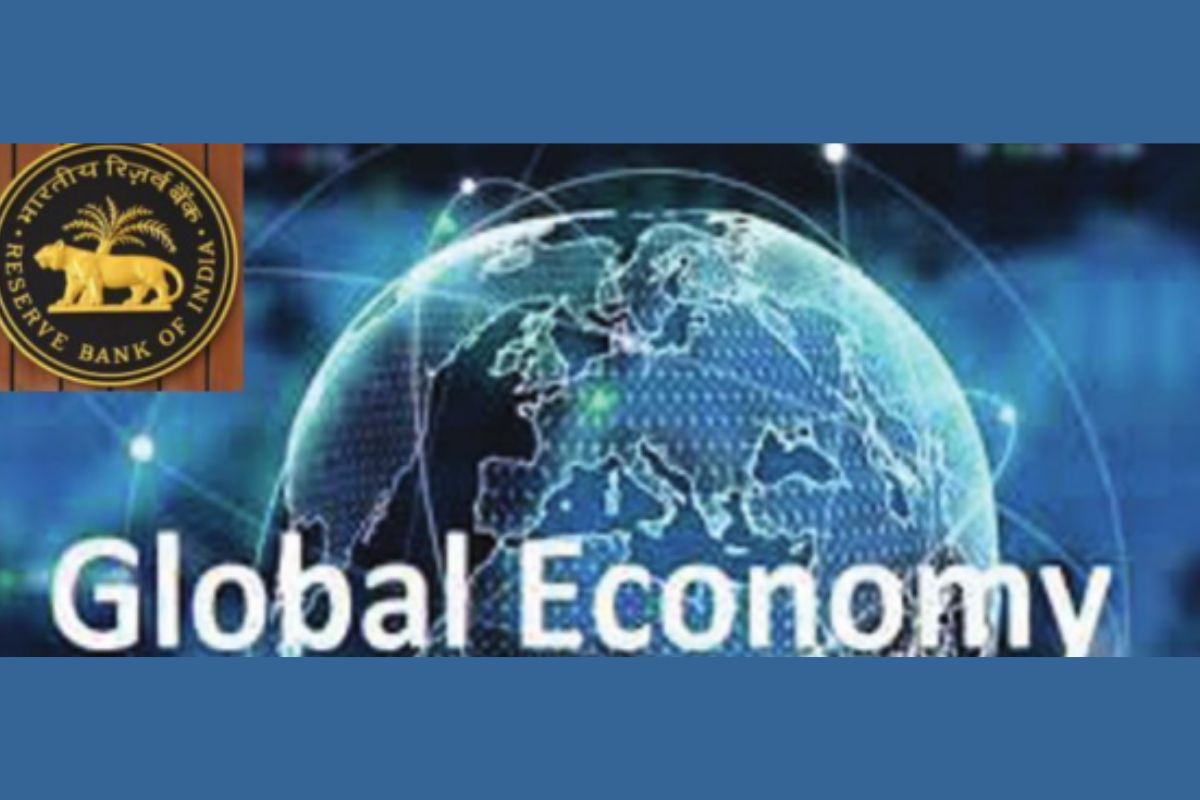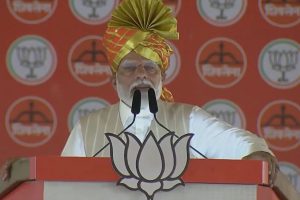In the current turbulent situation, when the global economic environment is not yet conducive to push growth, how did the Indian economy perform in the financial year 2022-23? This paper has made an attempt to answer this question from the data available in the public domain and those published by the Reserve Bank of India (RBI). An analysis of what has been reported in the RBI Bulletin in its July 2023 issue would lay bare the correct picture. It is revealed that the economy recorded a growth of about seven per cent in real GDP in 2022-23 besides experiencing a stable momentum of growth. How did this become possible? The same report has laid down the factors responsible for such a favourable situation. The factors are ~ flattened inflation curve, proactive monetary policy and supply management, fiscal consolidation, comfortable current account level, macroeconomic stability, strong and healthy balance sheets of banks, financial institutions and corporate entities, digital revolution, policy initiatives to make India a global manufacturing hub, resurgence in service sector competitiveness and favourable geo-economic positioning. Notwithstanding India experiencing a surge (7.8 per cent) in inflation during 2022-23, owing to the sharp increase in global prices of crude oil, food, fertilisers and metals, along with renewed supply disruptions in the aftermath of the war, inflation, however, moderated in the second half of the year following many measures taken by the central government. These were gradual normalisation of global supply chains, softening global commodity prices, proactive supply management system and successive hikes in the repo rate by the Reserve Bank. As one knows, income from agriculture and allied activities is the major contributor to GDP in India. So, let us see how this sector performed during the year under review. The report of RBI indicates that agriculture and allied activities were resilient during 2022-23, with gross value added (GVA) registering a growth of about three per cent. Production of kharif oilseeds, sugarcane and cotton being higher during the year, rabi acreage of most of the crops expanded during the period under review. Notwithstanding some damage due to unseasonal rains in some parts of the country in March 2023, the prospect of rabi crop production is expected to be promising. A threadbare analysis of data would indicate that there was a marginal decline due to spatial and temporal distribution of the south-west monsoon in kharif foodgrains production. In the industrial sector, manufacturing activity withstood global spillovers, while electricity generation exhibited robust growth, and mining recorded steady activity. Sustained momentum was seen in construction activity, while infrastructure and capital goods production benefited from the government-led investment in infrastructure. Production of consumer goods, on the other hand, remained muted and recovery in sectors such as automobiles was lopsided. Growth being linked with improvement in the pattern of employment, any study on the captioned subject must be conjugated with a concurrent study on the pattern of employment in an economy. Let us see what primary data indicates. It is seen that the labour market conditions in urban areas have shown conistent improvement during 2022-23. Involvement of the labour force during the year under review surpassed the pre-pandemic JanuaryMarch 2020 level. Worker to population ratio peaked during October-December 2022 and the unemployment rate stood at its lowest since the start of the survey in 2017-18. Organised sector employment indicated recovery in job creation in 2022-23. The average net subscribers added to Employees’ Provident Fund Organisation (EPFO) per month increased to 11.5 lakh in 2022- 23 from 10.2 lakh in 2021-22, signalling an improvement in formal employment opportunities. The various alternate employment indicators also showed steady improvement in employment conditions during 2022-23. The purchasing managers’ index (PMI) for employment showed continued increase in payroll hiring in both manufacturing and services sectors. The employment index remained above satisfactory levels for the manufacturing sector all through 2022-23 except for a marginal contraction in March 2023, while for services, it was positive for the entire period except for a marginal decline in May 2022. Similarly, the Naukri index which provides information on hiring activity based on the job listings on Naukri.com has also shown improvement in employment conditions during 2022- 23. Climate Change following global warming has direct and indirect impacts on the economy of a country. As such, climate change is recognised as a strong theme for coordinated policy action. While global efforts to reduce carbon emissions and transition to a greener economy are in process, India took need-based steps to check global warming and reduce carbon footprint in an effective manner. Thus, there was not much adverse impact on the growth of the Indian economy on account of this issue. Risk is another important factor that can affect economic growth. There are three types of risk, namely, risks arising from the financial stability perspective; physical risks (i.e. severe weather events such as floods, storms, heatwaves and fires) and transition risks (i.e., risks associated with adjusting to a low-carbon economy driven by government policies, technological developments and change in consumer preferences). Physical risks affect banks directly by change in credit portfolio. These are linked with operational and liquidity risks which, in turn, can have an impact on their profitability and solvency. The effect of transition risks, on the other hand, will vary depending upon whether the transition is orderly or disorderly. A disorderly transition will result in significant adjustment costs for all economic agents, leading to strained financial assets and increasing probability of default by borrowers. Since natural disaster incidents would increase non-performing Assets (NPAs), and keep them at elevated levels for longer periods, inefficient disaster management would result in an increase in gross NPAs to gross advance ratio. The Reserve Bank estimates that the gross NPA ratio is estimated at 0.37 percentage points in the year under review. The ratio may increase to 0.56 and 0.60 percentage points, on an average, in a year or two with episodes involving multiple disasters. Now, considering the present scenario and other socioeconomic factors, particularly the estimated global growth, let us see what would be the likely prospect of Indian economy during 2023-24. Global growth is expected to slow down in 2023 and may remain subdued throughout the year. The IMF’s World Economic Outlook (WEO) released in April 2023, estimates global growth for 2023 at about three per cent. Globally, disinflation efforts are expected to bring down inflation from 7.3 per cent to 4.7 per cent in 2023 among advanced economies (AE), and from 9.8 per cent to 8.6 per cent among emerging market and developing economics (EMDEs). However, it is stated that central banks would continue to face a challenging trade-off between restoring price stability and addressing growth slowdown in an environment of heightened uncertainty. Potential financial risks from high debt levels and the recent banking sector developments in the US and Europe highlight the scope for unanticipated build-up of stress with strong adverse spillovers across the global financial system. Keeping aside the risk factors due to uncertain inflation pressure, domestic economic activity does face challenges from an uninspiring global outlook going forward. But, so far as domestic economy is concerned, resilient domestic macroeconomic and financial conditions and new growth opportunities place India at an advantageous position. Taking into account good prospects of rabi crop, the government’s continued thrust on capex, higher capacity utilisation in manufacturing, double digit credit growth, and rising optimism among businesses and consumers, real GDP growth for 2023-24 is projected at 6.5 per cent with risks evenly balanced. To sum up, the Indian economy is likely to show resilience during 2023. The basic assumptions underlying future projection are sound macroeconomic policies, softer commodity prices, a robust financial sector, a healthy corporate sector, continued fiscal policy thrust on quality of government expenditure, and new growth opportunities stemming from global realignment of supply chains. The momentum of growth is likely to be sustained in 2023- 24 in an atmosphere of easing inflationary pressures. Slowing global growth, protracted geopolitical tensions and a possible upsurge in financial market volatility following new stress events in the global financial system, may, however, cause hindrance due to financial stability risks, which, if mitigated effectively by adopting structural reforms, could ensure India’s prospect for a growth rate of about 7 per cent is achievable











